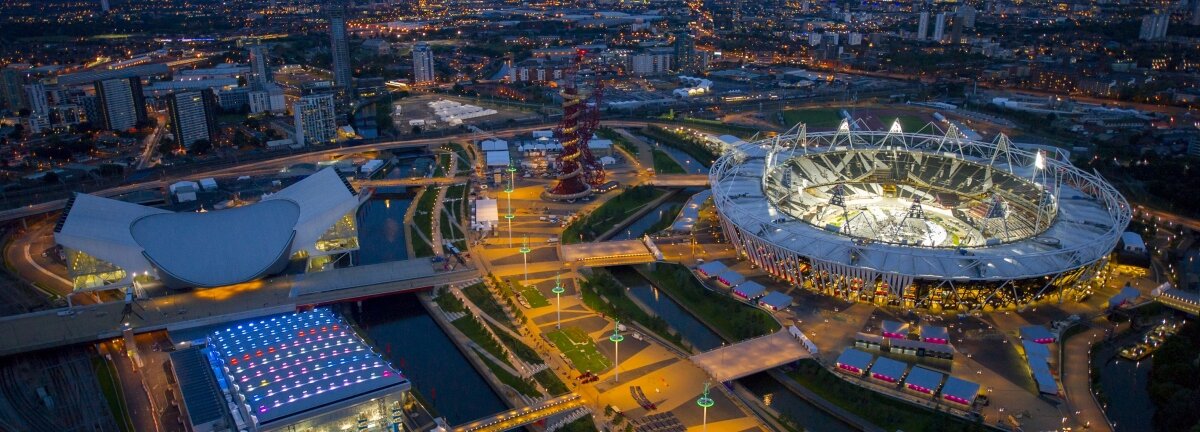London 2012: from plan to park

This morning, the NLA, London’s centre for the built environment, hosted a breakfast called Delivering the Rio 2016 Games: Lessons from London. Looking at the masterplan for Rio 2016 made me a little nostalgic for what happened in this city only one year ago...
At the beginning of August 2012, the passion for sporting activities had gripped me like most other Londoners. What also excited me was the prospect of being able to experience this new piece of London and the amazing structures and buildings of which we had read so much in the architectural gazettes over the previous years: the Olympic Park, the stadium and the venues, sponsor pavilions, MacDonald's restaurants and the Orbit, of course.
Another reason for my curiosity was because through Cabe’s Design Review I had personally been involved in reviewing those very structures. Our panel commented on their design quality and helped improve their performance and the visitor experience, among other things.
So now I finally had the chance to experience the three-dimensional reality and to see how it compared to the drawings and visualisations. How had those plans evolved before they took shape and became the Olympic Park? My interest wasn't only in the key structures but also the less glamorous buildings: the kiosks, signage, fences, lights, toilet booths and first aid stations.
My Olympics visit started the day after the opening ceremony, early on the Saturday morning at the entrance gates of the airport-like check in points. Once I had crossed the River Lea, I dived into a new world and I could really feel it. The Olympic Spirit.
It became obvious how the space is designed for people and how they can animate a place and make it a buzzy, exciting spot that really vibrates.
So what did I think?
Well, to be honest, I was baffled by the amount of tarmac and the almost bleak expanse of nothingness that stretched from the main stadium to the River Bank Arena. The only colour came from the dots in the recycled flooring material outside the stadium. Fortunately, the character of the space changed completely at my second visit – a late summer afternoon, when the area was heaving with people. It became obvious how the space is designed for people and how they can animate a place and make it a buzzy, exciting spot that really vibrates.
The activities and people in the Park were the true attractions. Their energy and multi-coloured diversity came together as a wonderful snapshot of the ‘Olympic family’ – literally, given the number of photos taken in front of the stadium or the Orbit. I felt, however, that the variety of the buildings in the Olympic Park was perhaps a bit bewildering and that some of the rigor that went into the graphics and brand identity could have been applied to the buildings too.
The timber structures of the eating places and some of the technical facilities had a lovely ‘natural’ quality which felt solid, welcoming and friendly, while some of the sponsor pavilions looked somewhat flimsy. Or would it have been possible to apply the idea to use recycled shipping containers, like the BBC pavilion, perhaps elsewhere?
What somehow managed to keep it all together were the stunning wildflower meadows that invited people to sit down and have their picnic and just enjoy the park. The rich variety of different landscape zones and plants provided an excellent setting in which the sports venues sat like precious jewels – it would be a great success if landscape design would always be taken so seriously and if more spaces like the Olympic Park would be created across the country! Luckily, the first part of the park just opened for the public, and it’s much easier now to get in there and visit the place and re-imagine the magic of London 2012.
A year later, what prevails in my memory is the overwhelming joyfulness that filled the Olympic Park and the cheerful crowds that supported their teams at the Olympic and Paralympic events. This was made possible by the smooth organisation of the Games, the seamless transportation across London and the skilful arrangement of venues and buildings in the park which enabled people to easily move around and enjoy the event. Another medal for Team GB – Gold for the park!
Now, let’s look to the future and see what’s happening in Rio.
Subscribe to our newsletter
Want to keep up with the latest from the Design Council?
